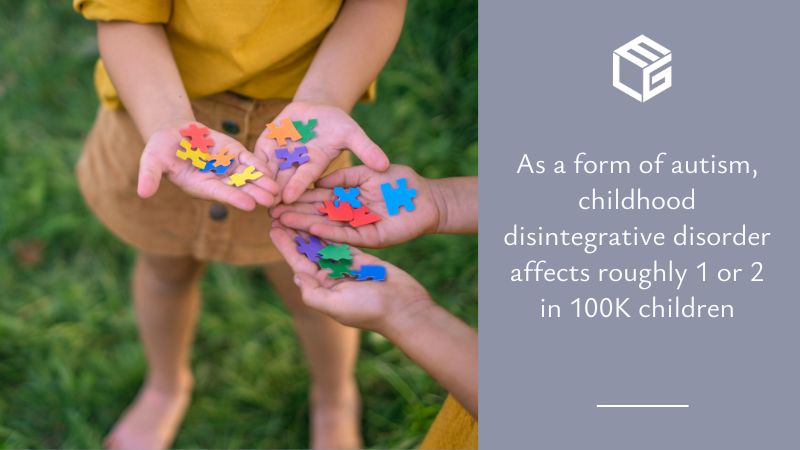As a viciously regressive form of autism, childhood disintegrative disorder affects roughly 1 or 2 in 100,000 children (source: Autism).
Following normal development for 2 to 10 years, a child with this condition will suffer deep reversals along multiple lines of development.
These include language, social skills, play skills, motor skills, cognition, and bladder or bowel control.
The speed and nature of the reversal of the skills vary, but it often occurs in a terrifyingly short period - as short as several months.
In about 75% of cases, the loss of skills is preceded by days or weeks during which the child experiences intense anxiety and even terror, including nightmares and bouts of confused, jumpy disturbance that resemble psychosis. For this reason, in the 1970s and the 1980s, the disorder was called disintegrative psychosis. Throughout the prodrome, the child may seem aware that something is wrong and will say that they are scared or pace and hold their head and say that it hurts.
How heavy metals in baby food can be contributors to the onset of childhood disintegrative disorder
While the exact cause of childhood disintegrative disorder is not known at the moment, several medical studies are linking it to exposure to heavy metals such as cadmium, arsenic, mercury, and lead. Because of industrialization, heavy metals have been contaminating the soil and water to a substantially greater degree than before. For this reason, the main ingredients in baby food often contain dangerous levels of heavy metals, such as:
- rice
- wheat
- carrots
- sweet potatoes
Heavy metals are neurotoxins, which means that they can harm the nervous system, particularly when it comes to children, who are still growing and developing. The nervous system also refers to the brain, so a connection between exposure to heavy metals and childhood disintegrative disorder may exist. By inhibiting the ability of neurons to carry out their regular intracellular functions or pass a signal to a nearby cell, neurotoxins can induce systemic nervous system arrest or even nervous tissue death.
A study from the medical journal Brain found lead to be one of the most concerning neurotoxins for children in the U.S. (source: Brain). The neurotoxic actions of lead include cell death, glutamate performing toxic functions, and wrong neurotransmitter storage and release. Even though all of the toxic effects of lead cannot be bound by a single unifying mechanism, the ability of this heavy metal to substitute for calcium is a factor common to numerous of the toxic actions it carries out. For instance, the ability of lead to pass through the blood-brain barrier is because it can substitute for calcium ions.
However, when a child ingests high levels of other heavy metals in addition to lead, they have a very great risk of developing a disorder on the autism spectrum. Consequently, parents should pay close attention and do their research before deciding which brand of baby food they will feed their child until they reach 36 months. Nevertheless, if they have already fed their baby toxic food and the child developed childhood disintegrative disorder, the parents should contact our law firm without hesitation, as we specialize in this kind of case. Lastly, it is important to make a differential diagnosis of the child regarding this disorder, as it can mimic lead and mercury poisoning.

